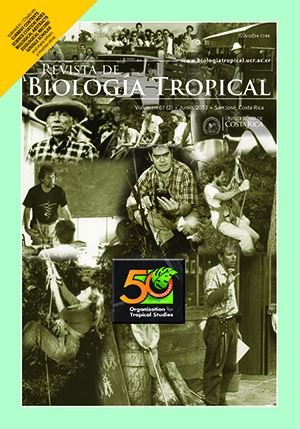Abstract
Chironomids, diatoms and microcrustaceans that inhabit aquatic ecosystems of the Northern Neotropics are abundant and diverse. Some species are highly sensitive to changes in water chemical composition and trophic state. This study was undertaken as a first step in developing transfer functions to infer past environmental conditions in the Northern lowland Neotropics. Bioindicator species abundances were related to multiple environmental variables to exploit their use as environmental and paleoenvironmental indicators. We collected and analyzed water and surface sediment samples from 63 waterbodies located along a broad trophic state gradient and steep gradients of altitude (~0-1 560m.a.s.l.) and precipitation (~400-3 200mm/y), from NW Yucatán Peninsula (Mexico) to southern Guatemala. We related 14 limnological variables to relative abundances of 282 diatom species, 66 chironomid morphospecies, 51 species of cladocerans, 29 non-marine ostracode species and six freshwater calanoid copepods. Multivariate statistics indicated that bicarbonate is the strongest driver of chironomid and copepod distribution. Trophic state is the second most important factor that determines chironomid distribution. Conductivity, which is related to the precipitation gradient and marine influence on the Yucatán Peninsula, is the main variable that shapes diatom, ostracode and cladoceran communities. Diatoms, chironomids and cladocerans displayed higher diversities (H=2.4-2.6) than ostracodes and copepods (H=0.7- 1.8). Species richness and diversity were greater at lower elevations (<450m.a.s.l.) than at higher elevations in Guatemala. Distribution and diversity of bioindicators are influenced by multiple factors including altitude, precipitation, water chemistry, trophic state and human impact.
##plugins.facebook.comentarios##
Downloads
Download data is not yet available.






